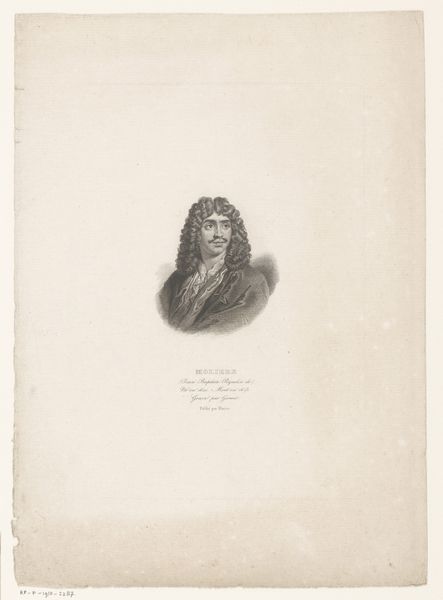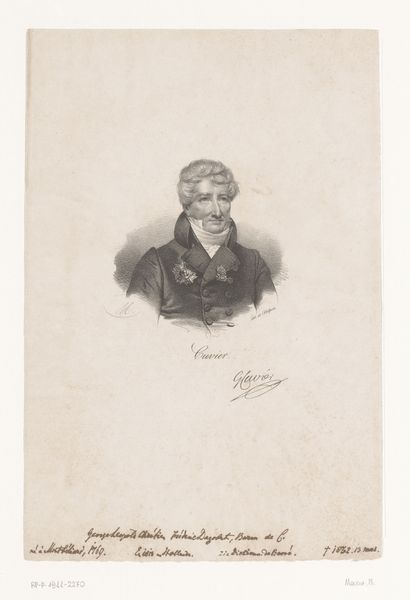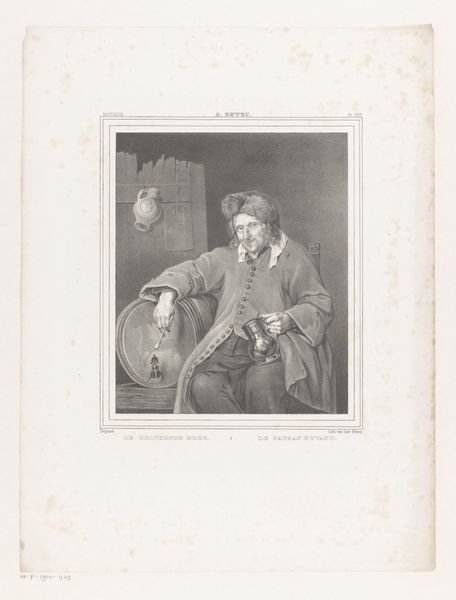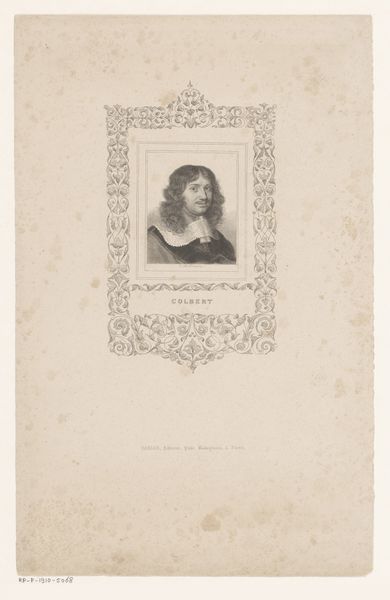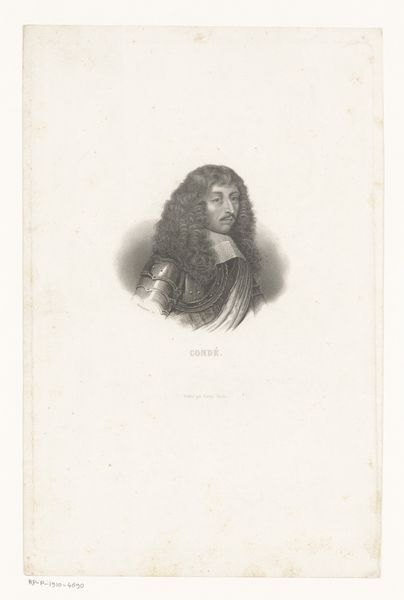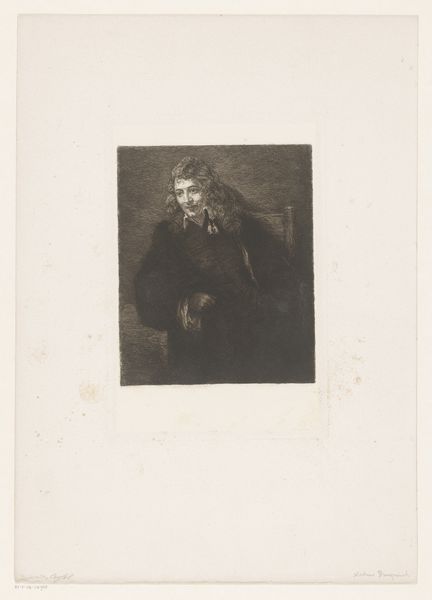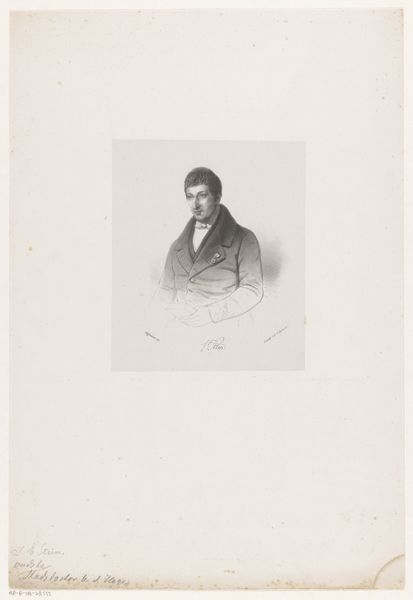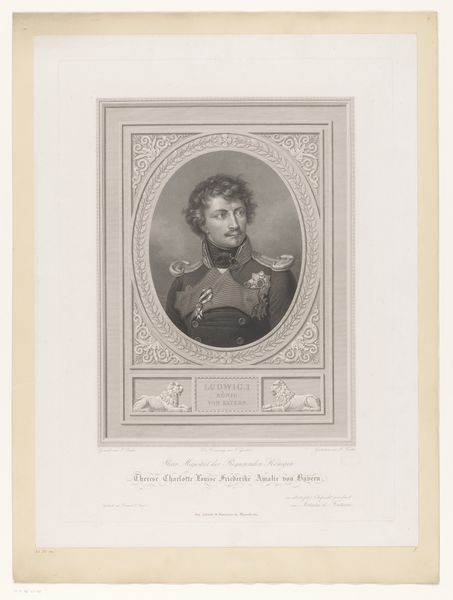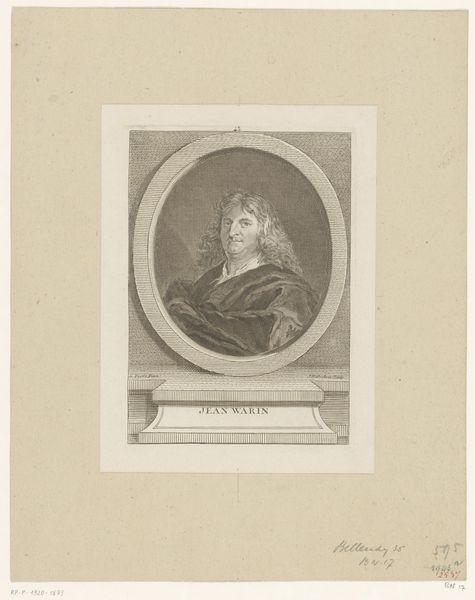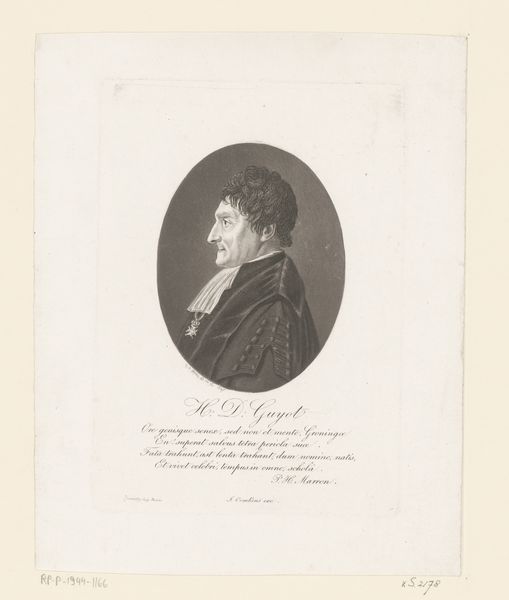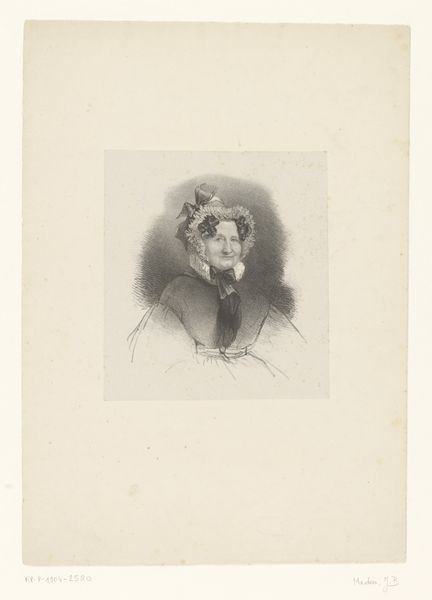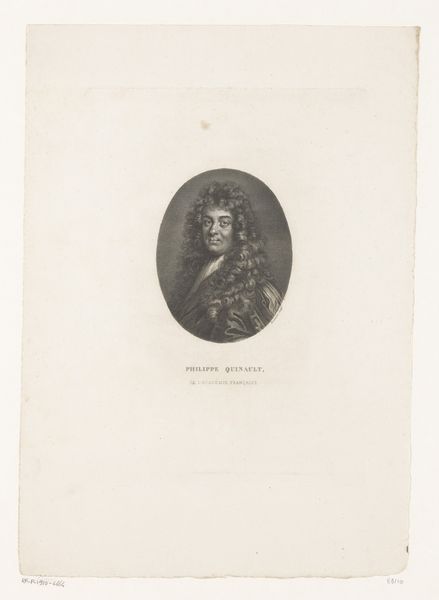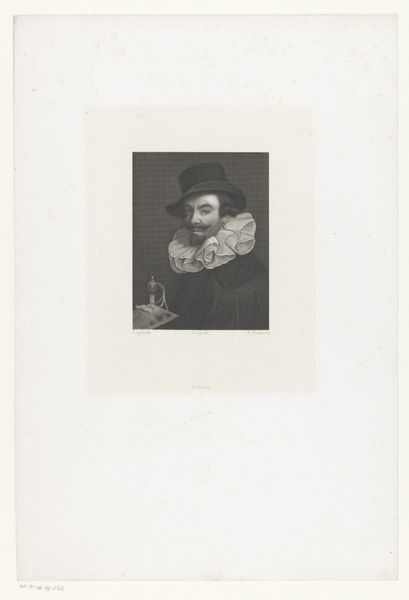
Dimensions: height 327 mm, width 227 mm
Copyright: Rijks Museum: Open Domain
Curator: Immediately, I get this sense of baroque drama, of theatrical lighting from this monochrome image. What’s catching your eye? Editor: I am immediately struck by the melancholic gaze and flowing lines here in this portrait of Inigo Jones from 1766. It’s an engraving by Jonathan Spilsbury, who managed to suggest such texture despite the flat plane. Curator: The treatment of light, what we could call tenebrism, is clearly an essential part of this print. Notice how Jones’s face emerges from that deep shadow, throwing into stark relief against the swirling dark. The baroque aesthetic relished such drama. Editor: Exactly, the high contrast is vital to interpreting this print. What do you make of how his likeness is softened here? What we think of now as sharp, modern clarity is sacrificed for emotional resonance. Look how light feathers around his beard to guide your eye, and that is critical for setting the overall mood. Curator: It reminds us that portraits are not just documentation, are they? This piece feels less about capturing Jones’s perfect likeness than conjuring a mood. Jones was such a fascinating figure too. Editor: Indeed. One sees baroque aesthetics serving a purpose that aligns very well with Spilsbury's own training as an artist, yet even the greatest masters sometimes show flaws such as perspective problems. What is conveyed might trump what is seen by the casual eye. Curator: Ultimately, it speaks to the way artistic vision—or let's say, the vision of the *artist*—transforms what we think we already know. Spilsbury captures the essence of the architect beyond surface. Editor: Well said. I will surely have to revise my views after you brought the emotional aspect into consideration, to better comprehend and appreciate Spilsbury's creative vision.
Comments
No comments
Be the first to comment and join the conversation on the ultimate creative platform.
